YOU ARE LEARNING:
Converging Lenses

Converging Lenses
A lens which converges light rays is called a convex lens. The nature of the image formed of an object depends on how far away from the object the lens is.
Lenses can either converge or diverge rays of light. In this lesson, we will look at converging lenses.
Recall how lenses work.

Can you guess what converge means?

What do you think a converging lens might do?

Here we can see parallel light rays being refracted by a converging lens. Where are all of the rays converging?

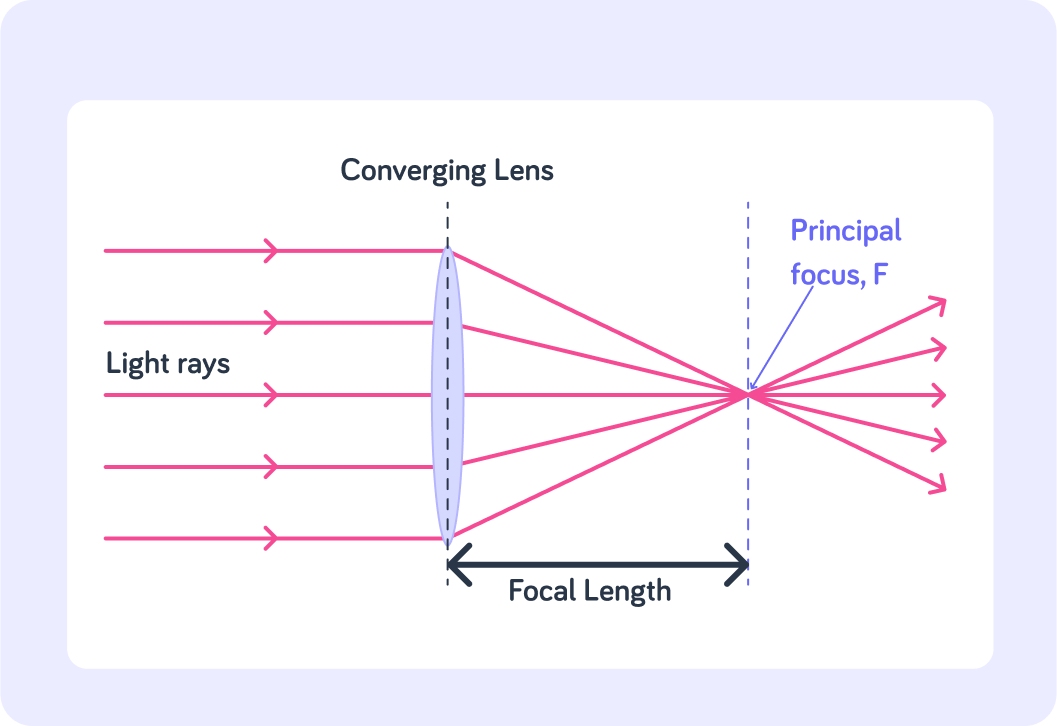
Converging lenses are known as convex lenses.
A way to remember this is that conVex lenses conVerge the rays.

Convex lenses can produce both virtual and real images.
TRUE or FALSE? A real image is formed when rays of light converge. The image appears at the intersection of rays.

TRUE or FALSE? A virtual image is formed when rays of light converge behind the lens.

To sum up ...
A real image can be displayed or projected onto a screen because the rays actually converge at the point where the image is formed in front of the lens. A virtual image cannot be seen on a screen because the image is formed by rays that only appear to converge at a point behind the lens.
When we want to draw ray diagrams for lenses, we need to first...
draw a straight line (green) from the object through the centre of the lens. This ray does not get refracted.
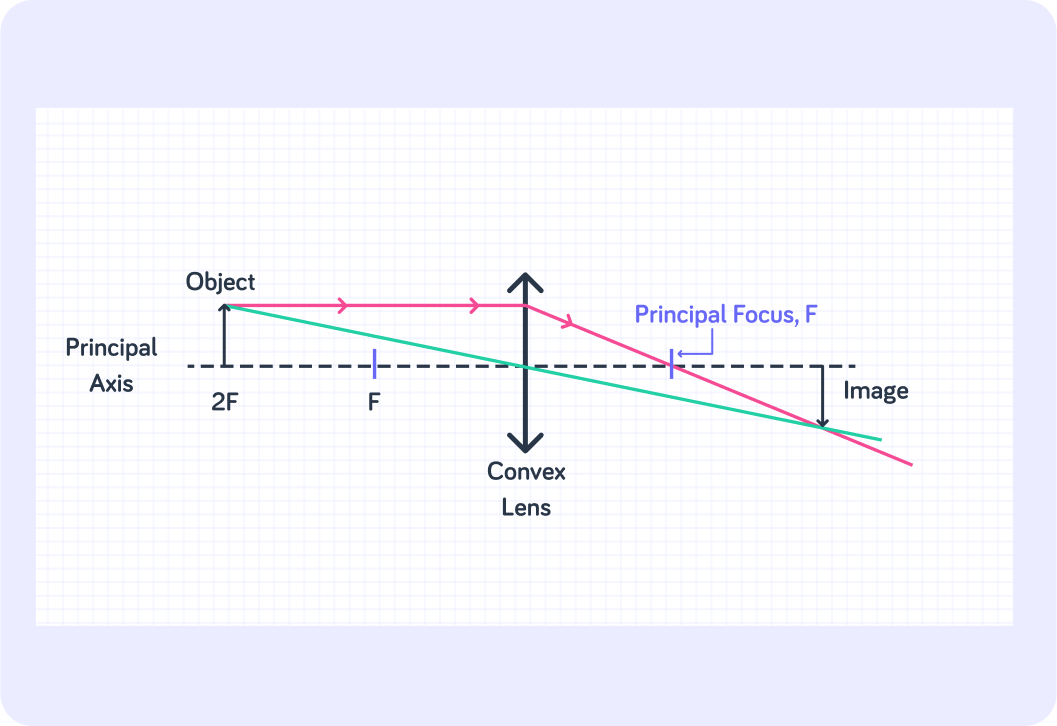
Then, we need to...
draw another ray (red) from the same point, parallel to the principal axis. This ray will get refracted and pass through the principal focus.

Where the image forms is dependent on where the object is relative to the lens. This object is at a distance of 2f (f is the focal length) from the lens. Which best describes the image?
A) The image is real, upright and the same size. B) The image is virtual, upright and diminished. C) The image is real, inverted and the same size.


Explanation
The image is real because it is in front of the lens and inverted because it is underneath the principal axis. This could for example be a photocopier.

Here the object is at a distance >2f away from the lens. Which best describes the image?
A) The image is real, inverted and the same size.
B) The image is real, inverted and diminished.
C) The image is real, upright and the diminished.

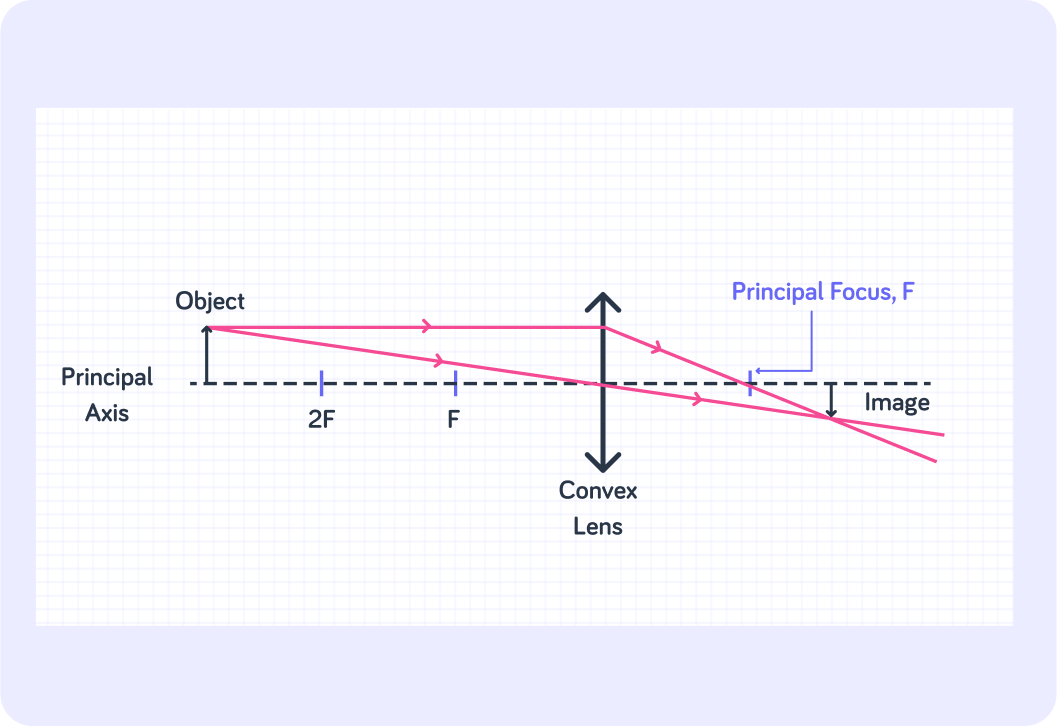
Explanation
The image is real because it is in front of the lens and diminished because it is smaller than the object. Examples of this type of lens would be eyes or cameras.

Here the object has a distance: 2f>distance>f. Which best describes the image?
A) The image is real, inverted and enlarged.
B) The image is real, inverted and diminished.
C) The image is real, upright and enlarged.

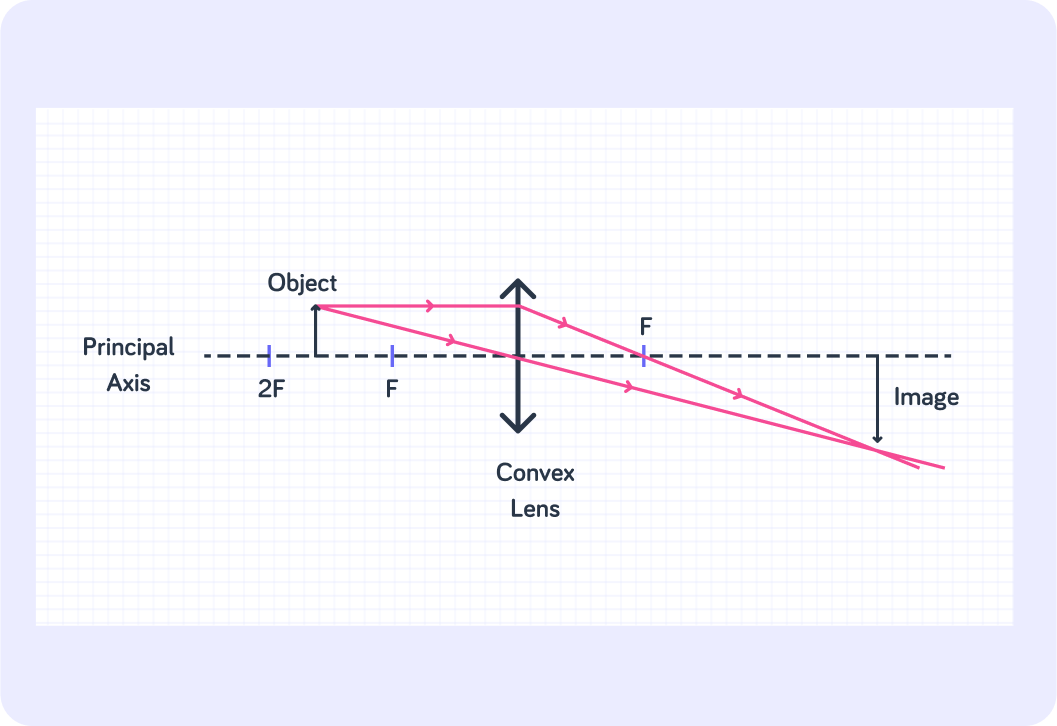
Explanation
The image is real because it is in front of the lens and enlarged because it is smaller than the object. An example of this type of lens would be a projector.

Lastly we have an object that is within the focal length f . Which best describes the image?
A) The image is virtual, upright and diminished.
B) The image is real, inverted and diminished.
C) The image is virtual, upright and enlarged.

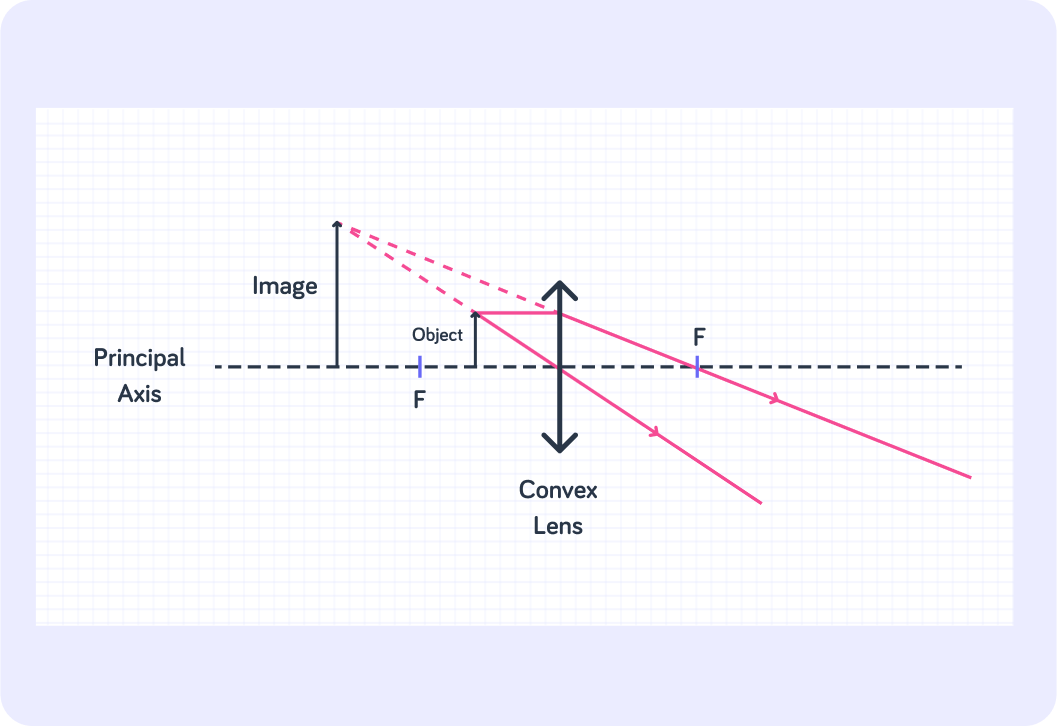
Explanation
The image is virtual because it is behind the lens. It is also enlarged. An example of this type of lens is a magnifying glass.

Out of the following options, which do you think are examples of convex lenses? Remember that convex lenses can form 4 different types of images, depending on how far away the object is from the lens.

You can select multiple answers
What kinds of images does a convex lens produce?

Let's look more closely at how a convex lens produces a virtual image. At what distance, x , is the object from the lens?
A) x>f
B)f<x<2f
C) x<f
Answer with A, B, or C


Are the rays of light 'converging' or 'diverging'?


To sum up...
For an object that is at a distance x<f away from a convex lens, the rays of light from the object no longer converge enough to intersect. Instead, they appear to intersect behind the lens, which is where a virtual image is formed.

Lenses that converge rays of light are called convex lenses.
Remember conVerge and conVex.
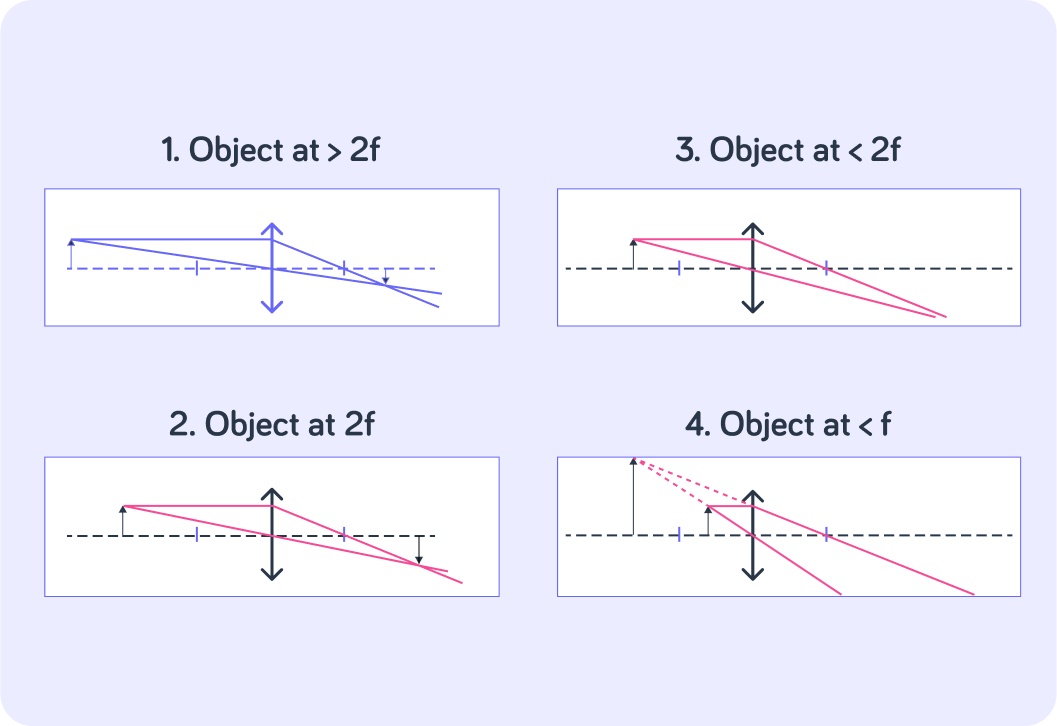
Convex lenses can produce both virtual and real images.
A magnifying glass can produce an enlarged, upright virtual image. A projector can create an enlarged, inverted real image. A photocopier can create an inverted real image the same size as the object. An eye creates diminished, inverted real images.

The features of the image depends on where the object (O) is relative to the principal focus.
O<f : Enlarged, upright virtual image. f<O<2f : Enlarged, inverted real image. O=2f: Same size, inverted real image. O>2f: Diminished, inverted real image.

